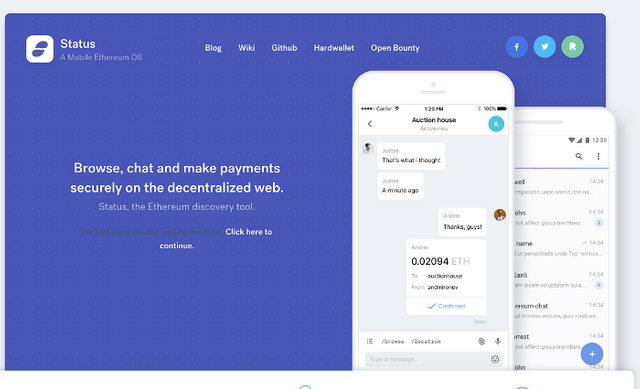My crypto-blog readers know that I like to read and read almost all interesting crypto-related books. It helps to understand the market better, the history of projects, and the people behind them.
For years I'm using Status crypto messenger and I was happy to find a history of Status ICO in the book "The Cryptopians: Idealism, Greed, Lies, and the Making of the First Big Cryptocurrency Craze" by Laura Shin.
"Another big ICO went up to bat, but this time it was going to try other ideas to democratize the sale. Jarrad Hope, a Perth native and internet marketer who had made money with poker bots, and his longtime business partner Carl Bennetts were building Status, an open-source messaging platform, and web 3.0 browser. After getting negged by VCs, Jarrad and Carl turned to the crowd. At first, their Slack had more than three thousand fans, but once Status.im announced its ICO, membership ballooned to more than fifteen thousand."

Since 2017 many ICOs are already forgotten, didn't accomplish anything, or just vanished, but Status messenger continues its development throughout these years. An interesting point is that Status founders didn't give up after the rejection by VCs but turned to the crowd. That's one more proof that when you have a good idea and team - there are always ways to fund it and develop it.
Let's read one more passage about the Status ICO process:
The scheme, the white paper said, was “an attempt to discourage big money investors, whales, from consuming the entire SNT allocation.” If someone sent too much money, some would be accepted, the rest returned. When the sale started at 4 a.m. Singapore time, Jarrad’s heart sank. No money was coming in. He eventually realized people were sending in such large amounts that the contract was rejecting the transactions. Just minutes in, there were almost eleven thousand unconfirmed transactions worth 450,481 ETH ($161.7 million). This clogged up the network with many more transactions than it would have had otherwise, since people whose transactions were rejected then sent new ones. It was nearly impossible for anyone to do anything else on Ethereum. Some bids for Ethereum domain name auctions failed because Ethereum itself was too congested. The Status ICO went on for twenty-four hours, allowing every time zone to participate. By the end, Status had raised more than $100 million... However, the contract had refunded more than it had accepted, so without the hidden ceilings, it would have garnered over $200 million. Unfortunately, Jarrad says, the design didn’t deter whales, who bought tokens under each cap but later complained they had paid a lot in transaction fees.
That's an interesting to remeber to see how the Ethereum blockchain was overloaded during those times (this was also a case with other ICOs). But also that's interesting to see how Status team decided to make more equal ICO, and to include as many people as possiple, preventing whales to buy the majority of tokens.
It's also inreresting to see that Status would have collected over $200 million and because of making the cap and increasing the time of ICO - got much less. But of course the main thing is that Status messenger became one of the most interesting crypto-projects, which brings new crypto adoption, web3 popularization and the real use-case as people will always need more ways to communicate and transact.